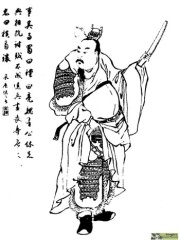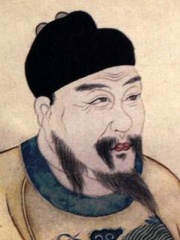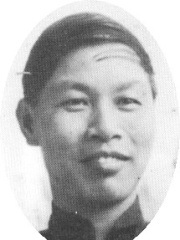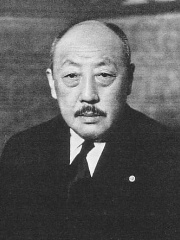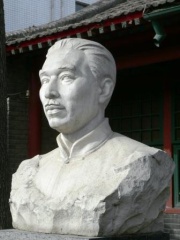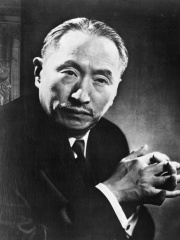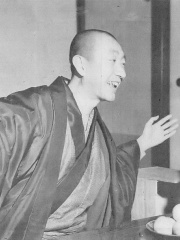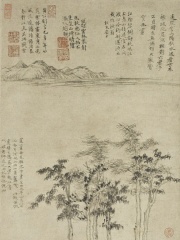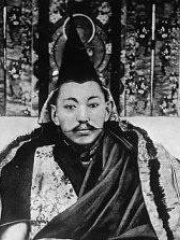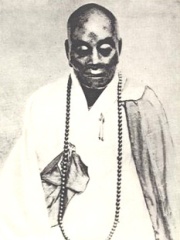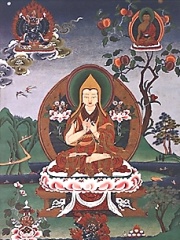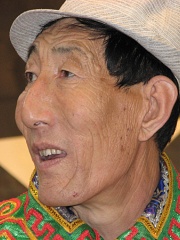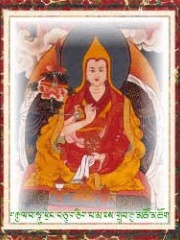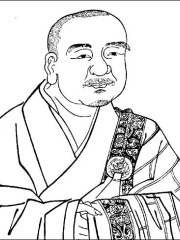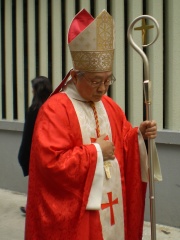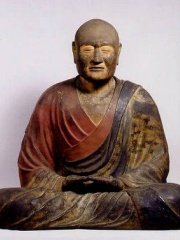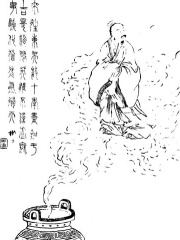RELIGIOUS FIGURE
Shaohao
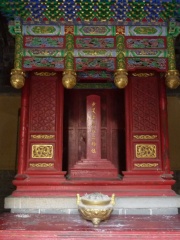
 Shaohao
Shaohao
Shaohao (Chinese: 少皞; pinyin: Shàohào; lit. 'Lesser brightness'), also known as Jin Tian (金天), was a legendary Chinese sovereign, usually identified as a son of the Yellow Emperor. According to some traditions, such as that within the Book of Documents, Shaohao is one of the Five Emperors. Read more on Wikipedia
Since 2007, the English Wikipedia page of Shaohao has received more than 142,680 page views. His biography is available in 26 different languages on Wikipedia (up from 24 in 2019). Shaohao is the 1,198th most popular religious figure (up from 4,880th in 2019), the 472nd most popular biography from China (down from 379th in 2019) and the 7th most popular Chinese Religious Figure.
Memorability Metrics
140k
Page Views (PV)
56.70
Historical Popularity Index (HPI)
26
Languages Editions (L)
5.64
Effective Languages (L*)
2.40
Coefficient of Variation (CV)
Page views of Shaohaos by language
Among RELIGIOUS FIGURES
Among religious figures, Shaohao ranks 1,198 out of 2,238. Before him are Geert Groote, Adam Rainer, Roberto Calvi, Angelus of Jerusalem, Peter the Venerable, and Maria Domenica Mazzarello. After him are José Sánchez del Río, Lucifer of Cagliari, Gildas, Jubal, George Hamartolos, and Raymond V, Count of Toulouse.
Most Popular Religious Figures in Wikipedia
Go to all Rankings
Geert Groote
1340 - 1384
HPI: 56.75
Rank: 1,192
Adam Rainer
1899 - 1950
HPI: 56.75
Rank: 1,193
Roberto Calvi
1920 - 1982
HPI: 56.74
Rank: 1,194
Angelus of Jerusalem
1185 - 1225
HPI: 56.72
Rank: 1,195
Peter the Venerable
1092 - 1156
HPI: 56.72
Rank: 1,196
Maria Domenica Mazzarello
1837 - 1881
HPI: 56.70
Rank: 1,197
Shaohao
HPI: 56.70
Rank: 1,198
José Sánchez del Río
1913 - 1928
HPI: 56.67
Rank: 1,199
Lucifer of Cagliari
201 - 371
HPI: 56.64
Rank: 1,200
Gildas
500 - 570
HPI: 56.63
Rank: 1,201
Jubal
HPI: 56.62
Rank: 1,202
George Hamartolos
900 - 867
HPI: 56.62
Rank: 1,203
Raymond V, Count of Toulouse
1134 - 1194
HPI: 56.62
Rank: 1,204

In China
Among people born in China, Shaohao ranks 472 out of 1,392. Before him are Zhuge Dan (200), Hu Shih (1891), Zhu Yujian (1602), Watchman Nee (1903), Emperor Shizong of Jin (1123), and Zhang Jinghui (1871). After him are Lu You (1125), Mao Dun (1896), Wellington Koo (1888), Liu Cixin (1963), Go Seigen (1914), and Ni Zan (1301).
Others born in China
Go to all Rankings
Zhuge Dan
200 - 258
HPI: 56.99
Rank: 466
Hu Shih
1891 - 1962
HPI: 56.97
Rank: 467
Zhu Yujian
1602 - 1646
HPI: 56.92
Rank: 468
Watchman Nee
1903 - 1972
HPI: 56.87
Rank: 469
Emperor Shizong of Jin
1123 - 1189
HPI: 56.82
Rank: 470
Zhang Jinghui
1871 - 1959
HPI: 56.74
Rank: 471
Shaohao
HPI: 56.70
Rank: 472
Lu You
1125 - 1210
HPI: 56.68
Rank: 473
Mao Dun
1896 - 1981
HPI: 56.66
Rank: 474
Wellington Koo
1888 - 1985
HPI: 56.64
Rank: 475
Liu Cixin
1963 - Present
HPI: 56.62
Rank: 476
Go Seigen
1914 - 2014
HPI: 56.61
Rank: 477
Ni Zan
1301 - 1374
HPI: 56.60
Rank: 478

Among RELIGIOUS FIGURES In China
Among religious figures born in China, Shaohao ranks 7. Before him are 14th Dalai Lama (1935), 13th Dalai Lama (1876), Huineng (638), Je Tsongkhapa (1357), Bao Xishun (1951), and 11th Dalai Lama (1838). After him are Sengcan (529), Rabban Bar Sauma (1220), Joseph Zen (1932), Jianzhen (688), Mang of Xia (null), and Gan Ji (101).

14th Dalai Lama
1935 - Present
HPI: 79.98
Rank: 1
13th Dalai Lama
1876 - 1933
HPI: 67.20
Rank: 2
Huineng
638 - 713
HPI: 64.43
Rank: 3
Je Tsongkhapa
1357 - 1419
HPI: 64.29
Rank: 4
Bao Xishun
1951 - Present
HPI: 59.62
Rank: 5
11th Dalai Lama
1838 - 1856
HPI: 58.68
Rank: 6
Shaohao
HPI: 56.70
Rank: 7
Sengcan
529 - 606
HPI: 54.59
Rank: 8
Rabban Bar Sauma
1220 - 1294
HPI: 54.46
Rank: 9
Joseph Zen
1932 - Present
HPI: 54.45
Rank: 10
Jianzhen
688 - 763
HPI: 54.07
Rank: 11
Mang of Xia
HPI: 53.85
Rank: 12
Gan Ji
101 - 200
HPI: 53.43
Rank: 13













